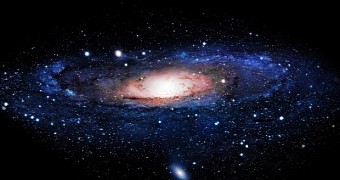Using good old math, scientists with the Australian National University found that our home galaxy, the Milky Way, is home to hundreds of billions of Earth-like planets.
Even cooler, they say that, being similar to our own, each and every of these Earth-like planets has the potential to host life. Pretty exciting, right?
Mind you, these brainiacs aren't saying that ET and its siblings are surely out there, patiently waiting for us to find them and invite them over for a cup of tea. What they mean to say is that, as shown by their study, the Milky Way is by no means short of habitable environments.
Whether these environments are, in fact, inhabited is yet to be discovered. Besides, the researchers stress that, if alien lifeforms really do exist, it's safe to assume that they are not of human-like intelligence. Otherwise, chances are that they would have contacted us by now.
“The ingredients for life are plentiful, and we now know that habitable environments are plentiful. However, the universe is not teeming with aliens with human-like intelligence that can build radio telescopes and space ship,” said scientist Charley Lineweaver.
In case anyone was wondering, the Australian National University scientists reached the conclusion that hundreds of billions of Earth-like planets populate the Milky Way by extrapolating from data thus far obtained with the help of the Kepler space telescope.
Specifically, the researchers started from the assumption that each standard star holds at least a couple of planets in its so-called goldilocks zone, i.e. the region where liquid water can form and resist, and then counted how many standard stars and, consequently, Earth-like planets can exist in the Milky Way.

 14 DAY TRIAL //
14 DAY TRIAL //